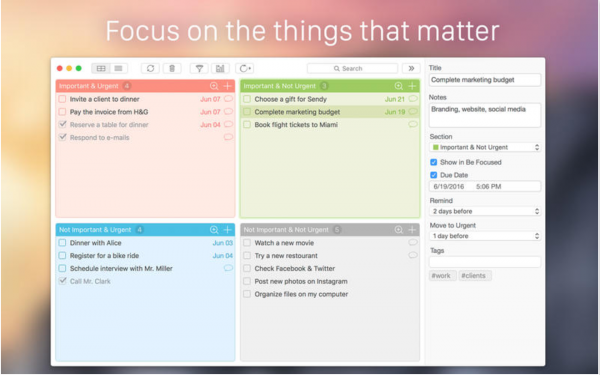Most companies experience periods of increased activity, either punctually or recurrently. Even though the expression “work overload” is often associated with a negative connotation, it should be acknowledged that periods of work overload are an integral part of the natural work cycle. What matters the most is learning how to cope efficiently by optimizing time-management and productivity. The Eisenhower matrix appears to be an unavoidable tool to achieve this!
Work overload: first cause of stress
Although work overload can be the consequence of an increase in the company’s activity (each team member must redouble their efforts to effectively carry out the tasks attributed to them), it can also be a direct consequence of a decline in activity (the company is in crisis and all of its players have to work more with fewer resources).

These periods of work overload, often unavoidable, have a direct effect on the stress levels and, therefore, managers and employees’ time management system. Studies have shown that work overload is one of the main sources of stress in the workplace.
A counterproductive stress
When faced with a large and unexpected amount of work, small organizational habits no longer help. Once the sense of familiarity is lost, it can give rise to major concerns and directly impact the quality of the work done: employees become less efficient at the very moment that they are expected to be more efficient. This fact is proven in every study carried out on the subject!
Several studies have shown that stress represents a major obstacle to employee productivity and, perhaps less significantly but equally worryingly, company productivity. For example, in 2015, Global Corporate Challenge (known today as the Virgin Pulse Global Challenge) revealed that only 63% of stressed employees felt that they had above-average productivity compared to 87% of non-stressed employees. Based on data from 185 countries, this study undermines the widespread belief that stress is the best way to show employees’ motivation and efficiency.
Managing time to manage stress
Whatever the origin of the work overload, the main thing is to implement an effective adaptation strategy so as not to feel overwhelmed, overtaken or even be crushed by all the tasks to accomplish.
But how can you manage stress when you cannot be certain to do the required amount of work on time?

The answer is: with time-management of course! By mastering the management of time which passes inexorably, employees have an opportunity to reinvent their way of working and optimize their productivity considerably. And for that, there are several solutions! For example, the application Freedom blocks social networks, emails and other unwanted content on mobile or computer, thus enabling users to remain fully focused on their set objectives. There is also Toggl, which records the time spent on each task and gives an overall view of the work day. However, although these time management tools are ideal solutions to boost productivity over the long term, they are not always adapted for periods of unexpected work overload that require immediate responsiveness.
Defining priorities with the Eisenhower matrix
Managing your time well means being capable of prioritizing. Truthfully, sometimes, the work overload is so heavy that it is impossible to accomplish everything within the given time frame: in that case, one must evaluate the importance of each task and make choices. To do this, the Eisenhower matrix seems to be an indispensable tool.
Dwight David Eisenhower once said: “What is important is seldom urgent, and what is urgent is seldom important.”
Created by the 34th President of the United States, this tool is presented in the form of a table composed of two axes. The first represents the urgency of the tasks to be accomplished and the second, their importance.
The Eisenhower matrix consists of four boxes and is an ideal tool for identifying tasks that can be carried over in time, those that can be delegated – to a virtual assistant called Julie, for example 😉 – or those that can simply be canceled:
- The first box corresponds to the important and urgent tasks: they must be given a lot of attention and carried out quickly.
- The second contains important but non-urgent activities: they are essential to our productivity but do not need to be accomplished immediately.
- The third represents urgent and non-important activities: they must be accomplished rapidly but do not contribute to the attainment of particular objectives. Therefore, it can be useful to see if they can be delegated!
- Finally, the fourth corresponds to non-urgent and non-important activities: they hinder concentration and waste time, so it is necessary to find a way to limit or even eliminate them.

By dissociating the urgent from the important, the Eisenhower matrix helps manage efficiently any unexpected task that may arise, without causing a considerable delay on the tasks that still require completion once the work overload period has passed.
Using the Eisenhower matrix daily
Over the years, many applications directly inspired by the Eisenhower matrix have been developed. For IOS, there is Focus Matrix, a “task management tool” with many parameters. Users have the ability to attribute deadlines to saved tasks, delegate some via email or text message or even, set up a reminder system.
For Android, My Effectiveness is the reference app when it comes to time management!
Do you take advantage of the Eisenhower matrix to manage your time and deal with work overload? Leave us a comment!

